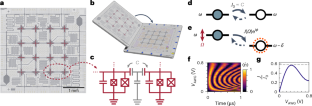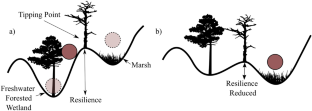2024-10-30 マサチューセッツ工科大学(MIT)
<関連情報>
- https://news.mit.edu/2024/quantum-simulator-could-uncover-materials-high-performance-electronics-1030
- https://www.nature.com/articles/s41567-024-02661-3
2次元超伝導量子ビットアレイにおける合成磁気ベクトルポテンシャル A synthetic magnetic vector potential in a 2D superconducting qubit array
Ilan T. Rosen,Sarah Muschinske,Cora N. Barrett,Arkya Chatterjee,Max Hays,Michael A. DeMarco,Amir H. Karamlou,David A. Rower,Rabindra Das,David K. Kim,Bethany M. Niedzielski,Meghan Schuldt,Kyle Serniak,Mollie E. Schwartz,Jonilyn L. Yoder,Jeffrey A. Grover & William D. Oliver
Nature Physics Published:30 October 2024
DOI:https://doi.org/10.1038/s41567-024-02661-3

Abstract
Superconducting quantum processors are a compelling platform for analogue quantum simulation due to the precision control, fast operation and site-resolved readout inherent to the hardware. Arrays of coupled superconducting qubits natively emulate the dynamics of interacting particles according to the Bose–Hubbard model. However, many interesting condensed-matter phenomena emerge only in the presence of electromagnetic fields. Here we emulate the dynamics of charged particles in an electromagnetic field using a superconducting quantum simulator. We realize a broadly adjustable synthetic magnetic vector potential by applying continuous modulation tones to all qubits. We verify that the synthetic vector potential obeys the required properties of electromagnetism: a spatially varying vector potential breaks time-reversal symmetry and generates a gauge-invariant synthetic magnetic field, and a temporally varying vector potential produces a synthetic electric field. We demonstrate that the Hall effect—the transverse deflection of a charged particle propagating in an electromagnetic field—exists in the presence of the synthetic electromagnetic field.



